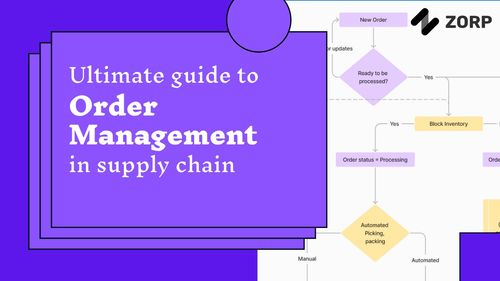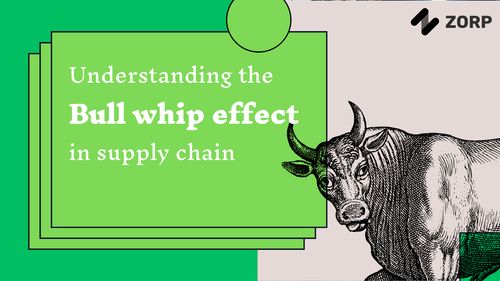An ecommerce business lives or dies by its Inventory efficiency. Having too little inventory means you may frequently run out of stock and lose sales. But having too much ties up capital and increases costs. The key is finding the right balance, and having the right analytics can help you get there. In this post, we'll explore some of the key inventory metrics you should be tracking, what they tell you, and how to respond.
What it shows: How many times your inventory "turns" or sells over a period of time, usually one year. It's calculated by dividing cost of goods sold by average inventory.
Why it matters: Inventory turnover measures how efficiently you're managing inventory. Higher turnover means inventory is moving quickly without excess stockpiling. Lower turnover could signal excess or obsolete inventory.
Concerning levels: Below 3x turnover annually often indicates issues with excess inventory. Above 6x may indicate you're frequently stocked out.
Actions: Review sales velocity and consider adjusting purchasing levels for slower-moving products. Liquidate obsolete items. For faster-moving products, consider increasing safety stock.
Example: If annual COGS is $1M and average inventory is $200k, turnover is 5x ($1M/$200k). This is a healthy rate.
What it shows: Average number of days a product sits in your inventory before being sold. Calculated by dividing average inventory by cost of goods sold, multiplied by 365.
Why it matters: This metric indicates how quickly inventory is moving. Higher values mean products are sitting too long before sale, tying up working capital.
Concerning levels: Over 60 days indicates potential excess inventory across products.
Actions: Review inventory levels by product and look for slower-moving items. Consider marking down stale inventory or liquidating it altogether.
Example: $200k average inventory, $1M COGS, equals 73 days inventory outstanding ($200k/$1M x 365 days). This is likely too high.
What it shows: Percentage of time a product is out of stock. Calculated by dividing quantity of stockouts by total product demand.
Why it matters: Stockouts lead to missed sales opportunities. The ideal is minimizing without investing in excess inventory.
Concerning levels: More than 3% stockout rate across catalogue.
Actions: Review safety stock levels, especially for top-selling items. Consider adding inventory for products that frequently go out of stock.
Example: 100 stockouts last year on product with 2,500 units sold equals 4% stockout rate (100/2,500). Stock may need to be increased.
What it shows: How closely documented inventory levels match actual physical counts. Calculated by dividing total accurate counts by total items counted.
Why it matters: Inaccurate counts make forecasting and replenishment difficult. Accuracy should ideally be as close to 100% as possible.
Concerning levels: Below 95% inventory accuracy.
Actions: Investigate root causes - are counts inaccurate at receipt or when fulfilling orders? Improve inventory tracking processes. Conduct regular, thorough cycle counts.
Example: If database shows 1,000 units but physical count is 950, accuracy is 95% (950/1,000). Processes could be improved.
What it shows: Gross profits generated by inventory as a percentage of its cost. Calculated by dividing annual gross margin dollars by average inventory cost.
Why it matters: GMROI helps assess inventory profitability. Higher ratios mean inventory is generating more profit relative to its cost.
Concerning levels: Under 30% GMROI annually.
Actions: Review lower performing inventory that is tying up capital without generating profits. Consider marking down or liquidating such inventory.
Example: $500K gross margin and $1M average inventory equals 50% GMROI ($500K/$1M). Inventory is generating healthy returns.
What it shows: How long on average a product sits on the shelf before being sold. Calculated by dividing average units sold daily into current inventory.
Why it matters: Longer shelf lives could signal excess inventory. Shorter shelf lives increase risk of stockouts.
Concerning levels: More than 90 days or less than 30 days shelf life across product lines.
Actions: For shorter shelf lives, boost safety stock. For longer shelf lives, re-evaluate demand forecasts and purchase levels.
Example: Average 10 units sold daily, 500 units currently in stock equals 50 days shelf life (500 units / 10 units per day). Inventory replenishment seems aligned with demand.
What it shows: Total costs for storage, handling, insurance, taxes, obsolescence as a percentage of average inventory value.
Why it matters: Carrying costs represent “wasted” capital tied up in inventory. Lower percentages are better.
Concerning levels: Carrying costs exceeding 25% of average inventory value.
Actions: Reduce slow-moving and excess inventory to free up capital. Negotiate better rates with warehouses.
Example: $100K carrying costs on $500K average inventory equals 20% rate, which is reasonable.
Monitoring these metrics on a regular basis provides critical insights into the health and efficiency of your inventory. As the examples illustrate, they can point to clear actions you can take to optimize inventory to align with sales trends and minimize costs. The key is reviewing them frequently and being proactive about addressing any concerning trends.

If you want to optimize your inventory, look no further. ZORP Inventory helps you hit "Just In Time" Inventory. It helps you automate your Inward, Dispatch, Picking, Packing, Audits. It also alerts you when your inventory becomes too low or too high.


